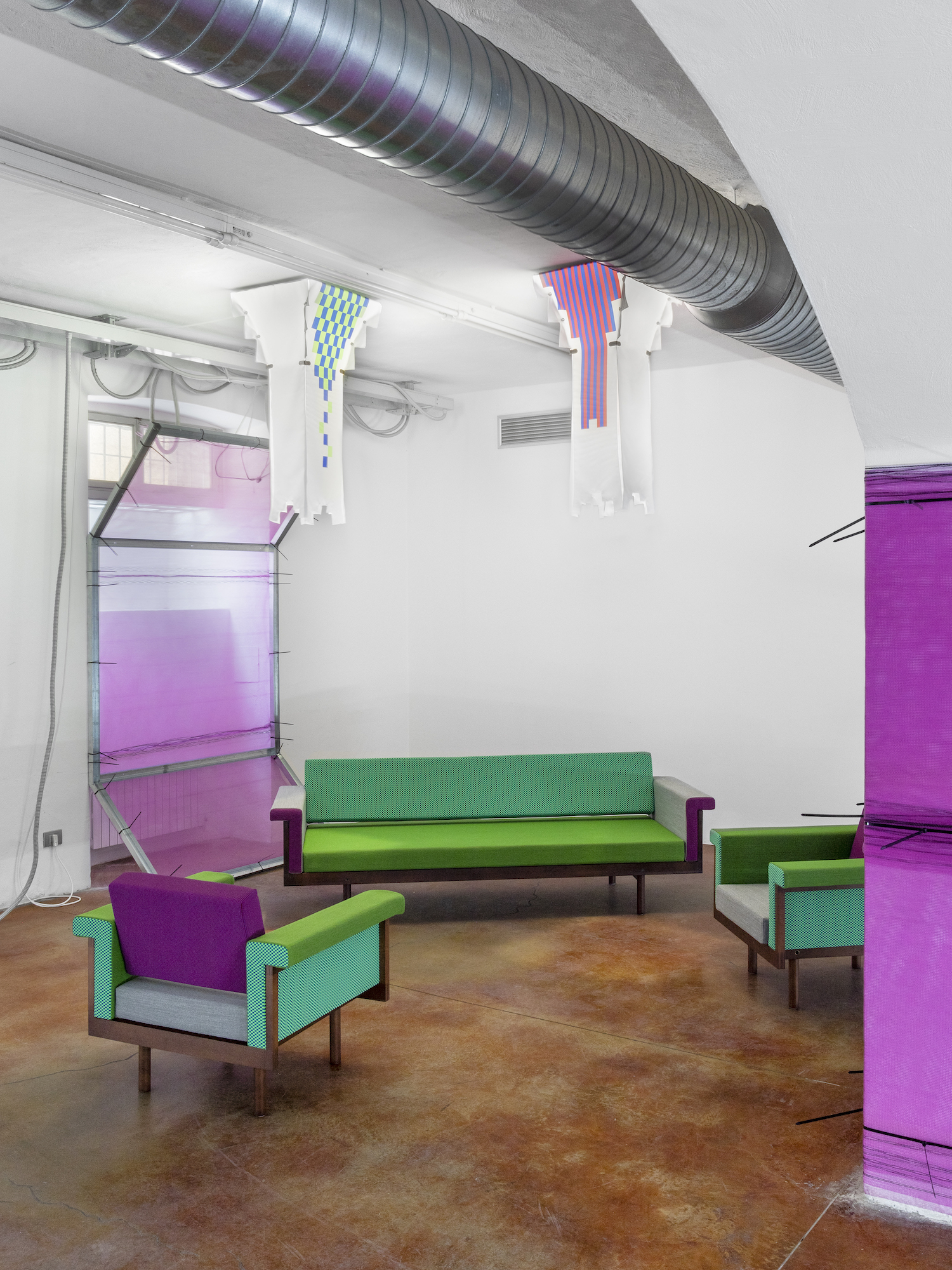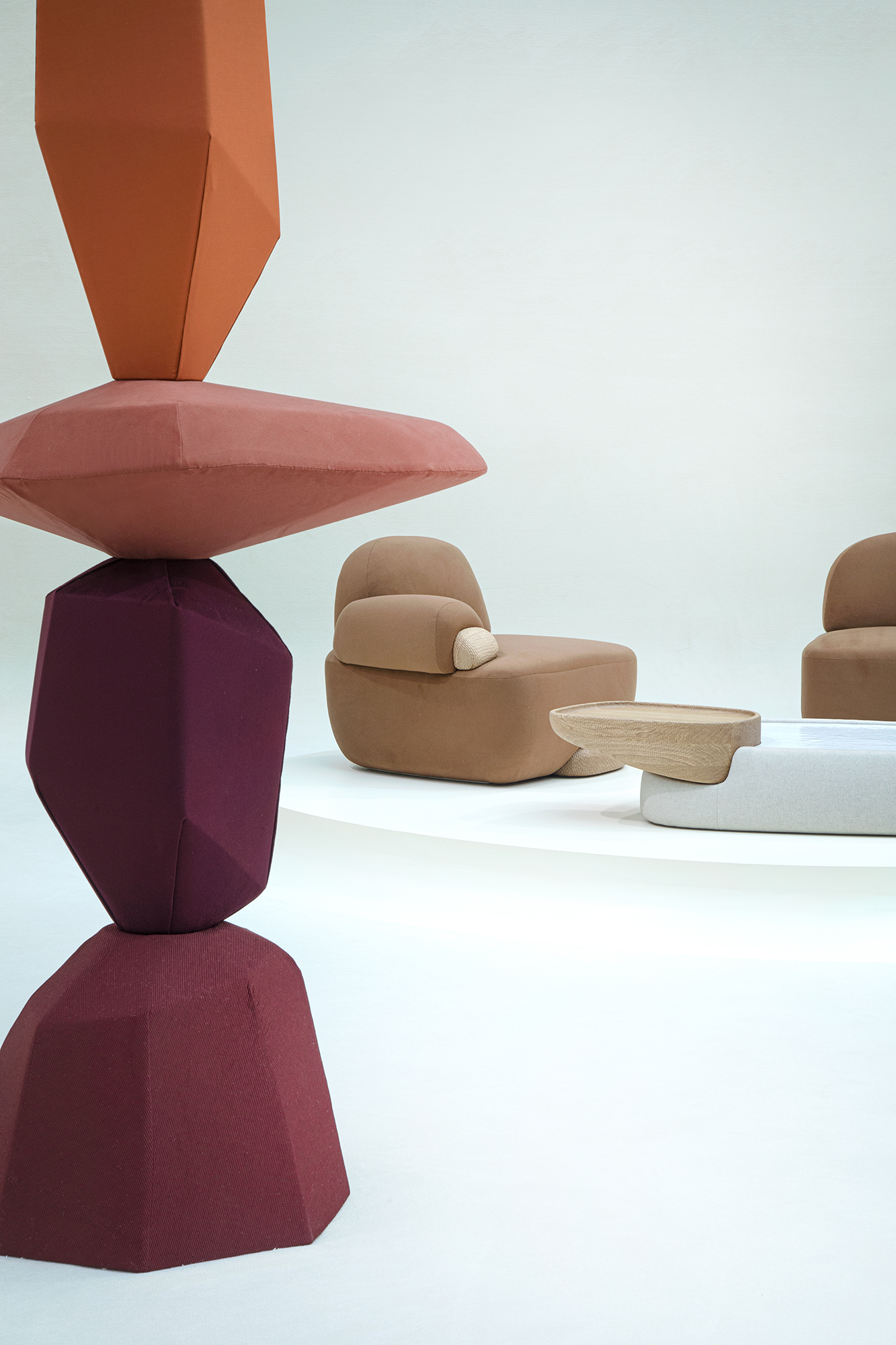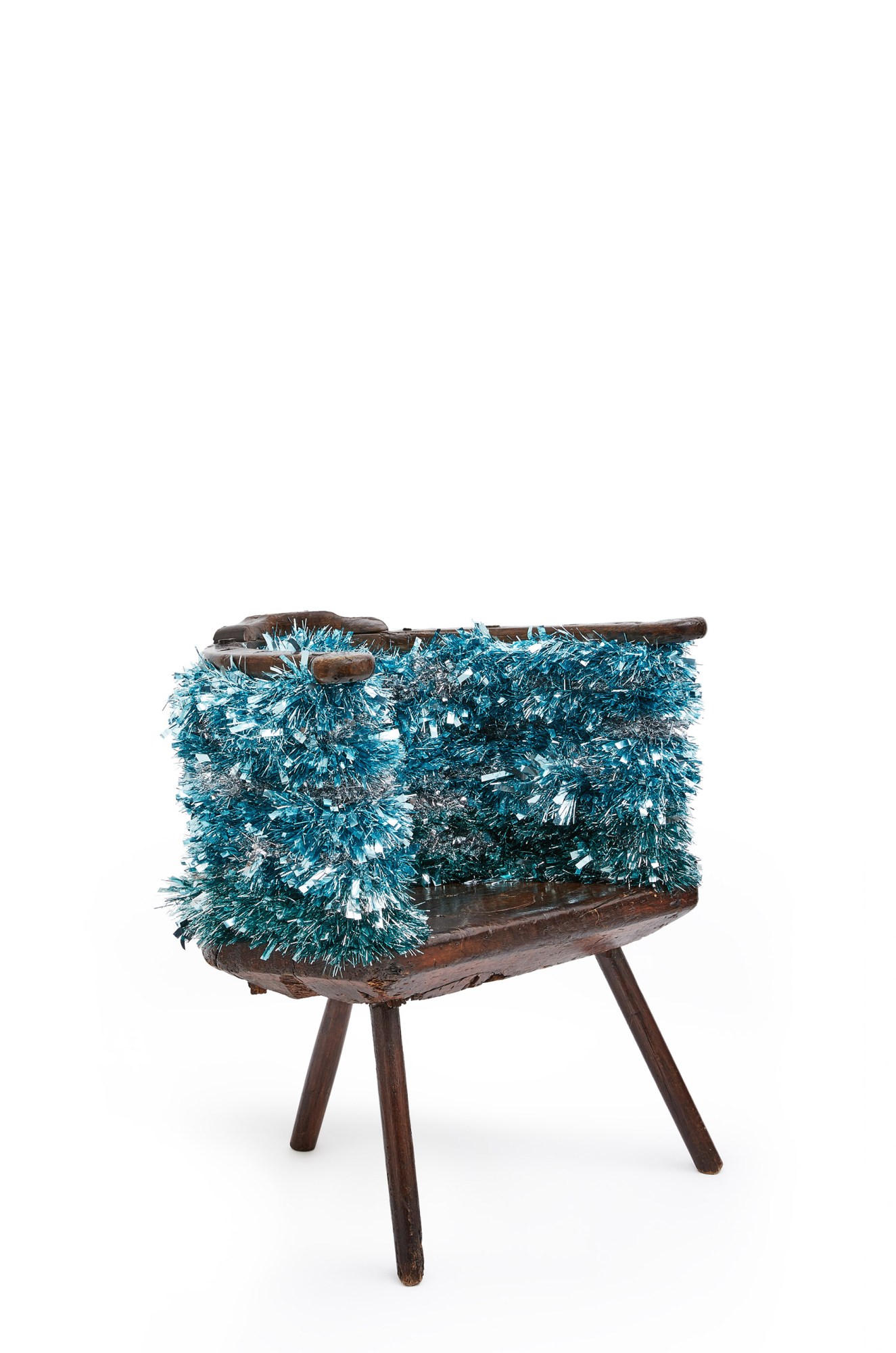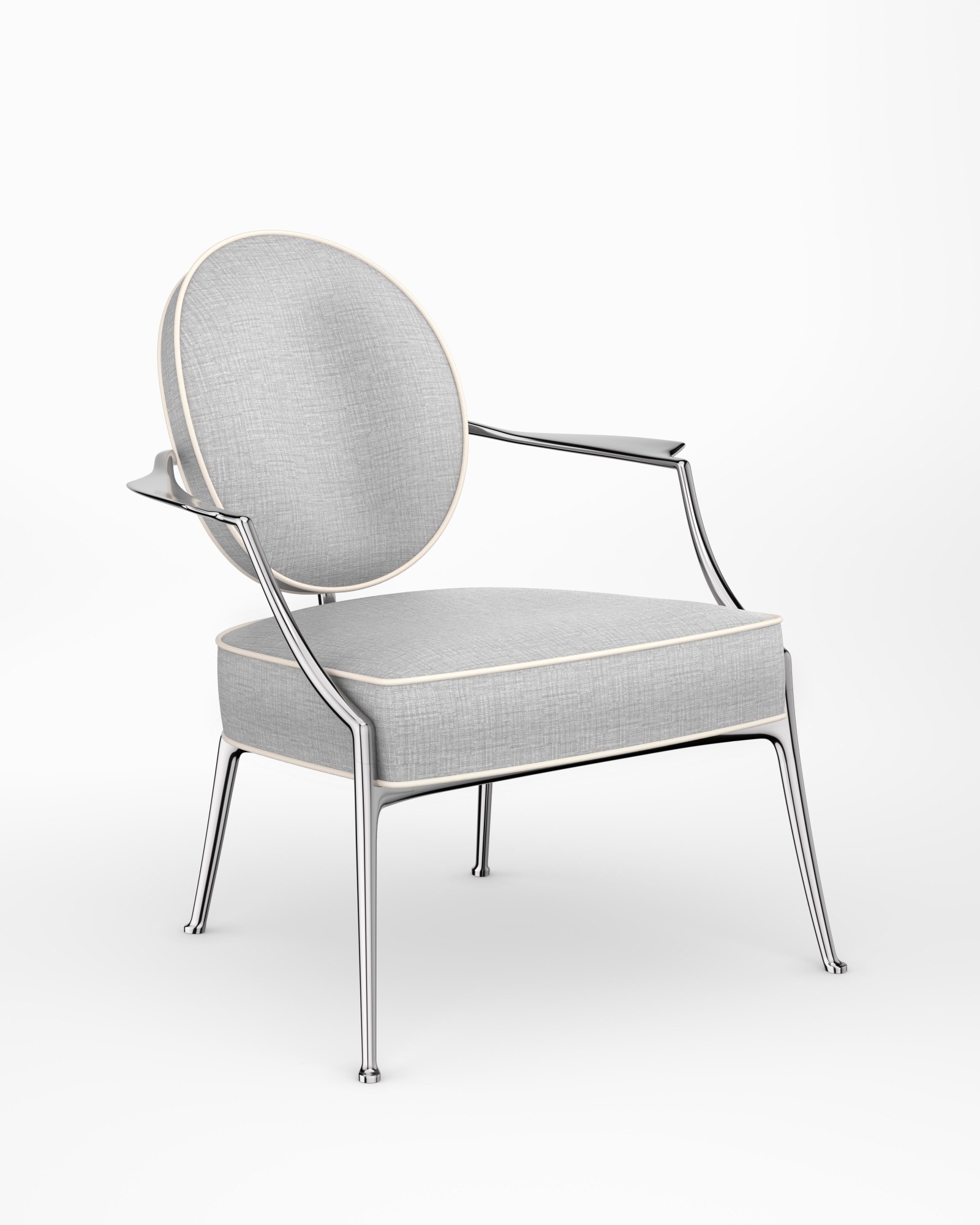Anyone who visited Salone del Mobile last month would be forgiven for thinking fashion week had come early. Aside from Celine Box bags and Métier Incognitos decking every patron’s arm, the week brimmed with events and installations by fashion’s heavyweights and rising stars, from Prada and Christian Louboutin to Louis Vuitton, Kiko Kostadinov and Etro. Together, they joined the ranks among design industry classics like Kartell and Longhi, heralding a new wave of fashionable furnishings.
However, the same dynamic held vice versa. Whether it’s Bottega Veneta’s SS23 show — replete with a Crayola-splashed runway and resin-dipped chairs by esteemed designer Gaetano Pesce — Dior’s Philippe Starck collaboration, or Loewe’s confetti-cubed installation by artist Lara Favaretto for AW23, a palpable interest in feng shui and fine interiors has gripped Planet Mode. These days, we’re not fighting over a front-row seat, but instead, an original 1987 Hermès Pippa chair.
Of course, this fashion-furniture merger isn’t totally new. Jonathan Anderson has been bringing craft, fine art and the world of interiors to a fashion audience from the moment he set foot in Loewe, supporting artisans, weavers and potters every year as part of his Loewe Craft Prize initiative. As for Hermès, furniture has been part of the furniture (sorry!) since the 1920s, when minimalist maverick Jean-Michel Frank and Art Deco doyen Paul Dupré-Lafon began working with the maison.

That said, now it feels like a rule — not an exception — that fashion brands traverse both realms, conquering yet another avenue. Wallpaper, Elle Decoration, Architectural Digest, you name it, the capital-D design publications were gushing hardest over the Diors, Bottegas and Loro Pianas in their must-see listicles, reserving but a few honorary mentions for your Kohlers and Gubis. In fact, the past few years have been rife with crossovers. These days, fashion royal Hamish Bowles helms The World of Interiors magazine, Dazed’s editorial director Ted Stansfield moonlights as an editor for zesty design publication Ton, and biannual fash mag Kaleidoscope produces Capsule, a sister mag focused on bleeding-edge design. If last year, fashion broke the art world, it was only a matter of time for interior design to follow. In essence, it’s just another visual language for fashion designers to express their vision.
Take, for example, Etro’s home offering. The first under newly appointed creative director, Marco de Vincenzo, it channelled the maison’s signature kinetic patterns and bohemian prints into a cascade of blues, rendered across sofas, stilted chairs, throws and one indulgently cushy vectored rug. “As a careful conductor of all the merchandising categories of the brand, I never work in a compartmentalised way,” Marco explains. “The starting point is always the same: the fabric. Only in this way, a blanket from my childhood can be transformed into a coat, the velvet of a sofa becomes a jacket, or a leather bag can be the perfect magazine rack at the foot of an armchair.”

Besides this skewering of disciplines, there’s also an authentic interest at play. According to How To Spend It’s assistant editor, Louis Wise, it’s an ongoing dialogue that’s always been there. “You think of Karl Lagerfeld — who had a massive Memphis phase and different properties finished in very particular ways — as well as Yves Saint Laurent and Pierre Bergé, right up until Jonathan Anderson today.” Indeed, the late Kaiser moved between rococo, Art Deco, austere futurism and Bauhaus, purging his design obsessions in some 20 homes. In practice, that meant a seriously covetable collection of minimalist tables via Martin Szekely, a space-age sofa by British architect Amanda Levete and marble monoliths by Konstantin Grcic. Today, that legacy continues: artistic director Kim Jones’ Fendi AW22 womenswear collection, for example, was punctuated with pale-pink and mint-green geometrics reminiscent of Karl’s SS86 ode to the Memphis Group.
But who’s to say fashion designers are more clued-up than their clientele? That Karl had taste is a given, but there’s a lot to be said about fashion’s consumers or prosumers, as it were. At a time when fashion is more ‘normie’ than ever — even your provincial auntie has subbed out her ‘capacious’ Burberry bag for something a little more IYKYK — it’s natural that customers find even subtler ways to distinguish themselves as culturally elite. Fittingly, the privacy of your not-so-humble abode is a great place to do this. Enter: stealth wealth 2.0, where, unlike your daily wardrobe, you can afford to flex a little more as only your closest circle will be privy to the wares.

Little wonder, then, that crème de la crème of quiet luxury, Loro Piana, went big and bold this year, teaming with industrial designer Cristián Mohaded on totemic, Andean-inspired sculptures of piled furniture, shown across the Brera design district, Loro Piana’s store and the headquarters. “Interiors is an extraordinary possibility of brand extension. We talk to the same clients, the same target that already know and appreciate Loro Piana,” says the brand’s Interiors director Francesco Pergamo. “We have the possibility of extending the same quality, elegance and tactile pleasure to homes, yachts, private planes.”
In many ways, it’s a story well told. Fashion doesn’t just sell clothes, but a lifestyle. If a brand knows its audience includes jet-setter professionals, then it will cater accordingly. Karl Lagerfeld, after all, wasn’t the only person keen to beautify his life. There’s plenty of names on the Forbes 100 that know just as much about Isamu Noguchi as they do Rei Kawakubo – they’re just, quite chicly, playing it down.
Indeed, labels have rich and studied customer portfolios that extend beyond the basic metric of rich versus aspirational. As such, while the shows continue at fever pitch, acting more and more like an entertainment industry, the cooler, slower workings of interior design bubble beneath. Yes, bags, accessories and perfume will always be cash cows, but if you thought the odd treat-yourself purchase is bankrolling the likes of LVMH and Kering, you’ve got news coming. Not only are the upper-middle and upper classes making repeat purchases that keep brands afloat, but many are literate in interior and industrial design — or if not, their advisor is. As fashion writer and brand strategist Richard Gray puts it: “If the marketing departments at our favourite fashion houses can work their magic using the same playbook they use to sell watches and jewellery; handbags and fashion, then Kerching! It’s a winner.”

Clearly, it’s a strategy with legs. This year, Louis Vuitton’s Objets Nomades design series — first launched in 2012 — saw collaborations with several international designers, including Atelier Biagetti and Karl Lagerfeld favourite Marcel Wanders. Unlike the quite low-production LV accessories, though, these items are made in ultra-short supply, giving them a bespoke edge on your average Speedy bag. In short, they deflect any suspicion that the magical allure of a commodity is little more than fantasy. Rather, here, it is rooted in one-off, hyper-specialised skills, not a tried-and-tested prototype the brand has been flogging in the thousands. Rarefication? Perhaps. The pinnacle of luxury, laboured over for longer than your average fashion season? Absolutely.
For further proof, just look at London-based studio Raw-Edges’ latest Binda armchair collection. This began life as an experiment testing whether a tennis ball could be made from paper. Luckily, Louis Vuitton loved the idea and helped the studio develop it. The result is kooky and completely unique. “It is our fifth collaboration with Louis Vuitton. We started in 2010 with our Concertina collection which took about four years to develop and was launched in 2015,” say co-founders Yael Mer and Shay Alkalay. “The interest to work with LV relates to the inventive foundation of the company — not just the flat trunk but so many other inventive mechanisms like the folded bed, collapsible cabinets and other beautiful ideas that can still be seen at the Asnières atelier,” they add, highlighting that LV has an archive fashion fanatics and design nerds alike can fawn over. Clearly, there’s plenty for the in-house team to play with already. Branching out to recognised design names is just Louis Vuitton’s way of elevating its inventory.

As a foil to this archival digging and rarefication process, there’s a democratic effect at play, too. Sure, design objects don’t come with accessible price tags, and the design audience is notoriously cool – sometimes, achingly so. But unlike invite-only fashion shows, events like Salone de Mobile’s gates are generally open, offering reasonably priced tickets to all. Lofty aesthete or self-proclaimed fashion bimbo that likes the pretty shapes, everyone is welcome and, probably, quite keen to get involved. You can’t touch (and probably can’t buy), but you can look and indulge in the beautiful forms on show, up close and in person.
No doubt, as this hunger grows, the interior design market could become all too normy, leaving the visual cognoscenti with no choice but to find another cultural font to drink from — far from the buzzy confines of TikTok and the gram. Fortunately, our good friends in fashion will be guiding the way, or at least catering to these haughty demands. And quite right, too. Fashion might be fickle, but it’s often ahead of the curve. Want to be cool, relevant and anything but passé? No bother. Loewe’s tinselled chairs are all the support you need — at least for now.


